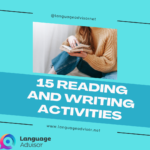22 Grammar and Spelling Activities. Communicative Activities and Games for Learning and teaching English
22 Grammar and Spelling Activities

22 Grammar and Spelling Activities
22 Grammar and Spelling Activities. Coming from a variety of teacher resource books, the activities listed in these pages are designed to foster communication through high-interest and motivational tasks. Each of these activities provides the crucial opportunity for practice that is so essential to the successful acquisition of a foreign language.

Conditional Chain Reaction
Any number of students can play and this is an excellent soft kush ball toss activity while students are sitting at their desks. The teacher begins with a sentence: If Ron took a trip, he would go to Switzerland. Then the teacher tosses the ball to a student at random and that student has to make a new sentence turning the teacher’s conclusion into an ‘if’ clause and adding a new conclusion, e.g. If Ron went to Switzerland, he would climb the Matterhorn. The ball is then tossed by that student to another who says: If Ron climbed the Matterhorn, he would get cold, and the game goes on from there.
From Shenanigames by James Kealey and Donna Inness

Jeopardy
This game can be played to reinforce grammar points, vocabulary
knowledge or to test general knowledge as a means of strengthening listening/speaking skills. Students are divided into teams of 5-7 students (depending on class size). 1 person from each team comes to the front of the class to stand behind a desk that has a bell on it (or you can use a system of having students raise their hands when they know the answer). You read a statement and the students compete with each other to guess the correct corresponding question. E.g. This is an animal that is afraid of dogs – correct answer is “what is a cat?” The student who signals the right answer first gets a point for the team, then the next team member on each team comes to the front. There is a “daily double” question when the students are allowed to wager how much money they’d like to risk. Each question asked is part of a category that the teacher announces and each question is progressively more difficult from a value of $100 to $500. I have found this to be one of the most successful games that appeals to students, and higher level students really enjoy the challenge of putting their answers into question form.
Based on the television show “Jeopardy”
22 Grammar and Spelling Activities

Tic-Tac-Toe
Draw a tic-tac-toe grid on the board (9 squares). In each square put a word (you can use this to reinforce new vocabulary as well as a variety of grammar concepts, e.g. verb tenses, prepositions, adverbs, adjectives, modals, etc.) Divide into 2 teams. Team 1 selects a word and must use that word correctly in a sentence. Team 2 then verifies whether or not the sentence is correct – if it is correct then Team 1 receives an X in that square, then it’s Team 2’s turn to select a word square. The team’s objective is to get 3 in a row for tic-tac-toe. To reinforce understanding of the use of some words as both nouns and verbs you might put the word “love” in one of the boxes. When team 1 chooses “love” the teacher then tells them “use love as a noun in a sentence”, etc.
From Grammar Games by Mario Rinvolucri

Jumbled sentences
Pick a sentence out of a textbook and write it up on the board with the words in jumbled order, e.g. early the week I to during have to go sleep. Working in teams the students work out the original sentence. The first team to identify the correct sentence gets a point.
Variation: Jumbled words – write words on the board that the students have recently learned, or words that they have difficulty spelling. The first team to work out the correct word wins a point. It is best if you can give them a hint (“these are from your latest vocabulary list, or all of these words are names of animals” – then put a group of 4-6 words on the board that fall into that category – or any other category you choose, this is excellent for reviewing basic words for beginning students).
From Five Minute Activities by Penny Ur and Andrew Wright
22 Grammar and Spelling Activities
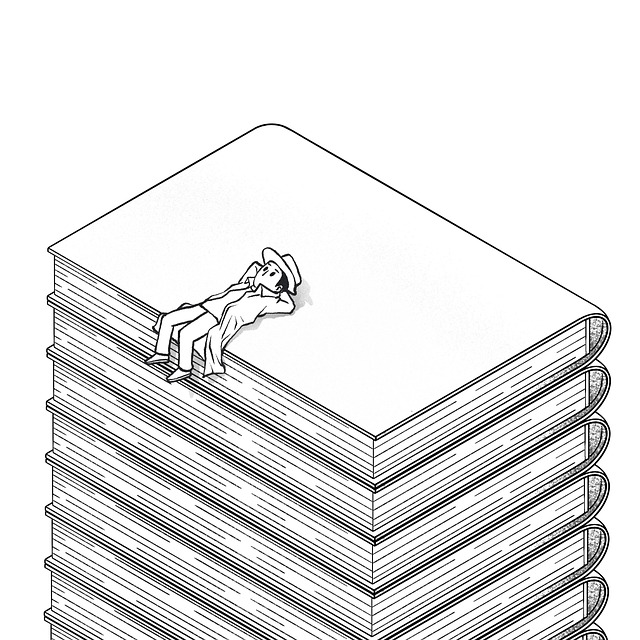
Red Rover
This game can be played with a variety of grammar points, or as vocabulary practice, etc. One example is to reinforce the present continuous tense. Select two team captains and have each go to an opposite side of the room. All of the other students stand in the middle of the room (if you can move desks, otherwise students can remain in their seats until they are called). The captains are given a list of activities, e.g. brushing teeth, washing dishes, writing a letter, etc. Captain 1 names one of the students in the middle and then describes the activity (without using the words listed) with three phrases, e.g. “Susan, I am putting toothpaste on this thing, I am putting it in my mouth and doing this (demonstrate), I am using water, What am I doing?” If Susan correctly says “you are brushing your teeth”, she goes to Captain 1’s team. Captain 2 then has his turn and so on until all of the students in the center have gone to one side or another. The team with the most members wins.
From Shenanigames by James Kealey and Donna Inness

Competition Bee
This is like an old fashion spelling bee in that everyone in the class is standing at their desks, when asked a question if they do not answer correctly they sit down and the student that remains standing at the end of the game wins. You can also play this in teams and stop at a given time and count the number of students that are still standing on each team, the team with the most wins. Go around the group quickly asking questions, for example your topic might be past tense verbs – call on a student “Abdulla “fight”, Abdulla says “fought”, you answer that that is correct and move on to the next person.
From Interactive Techniques for the ESL Classroom by Connie and F. Floyd Shoemaker
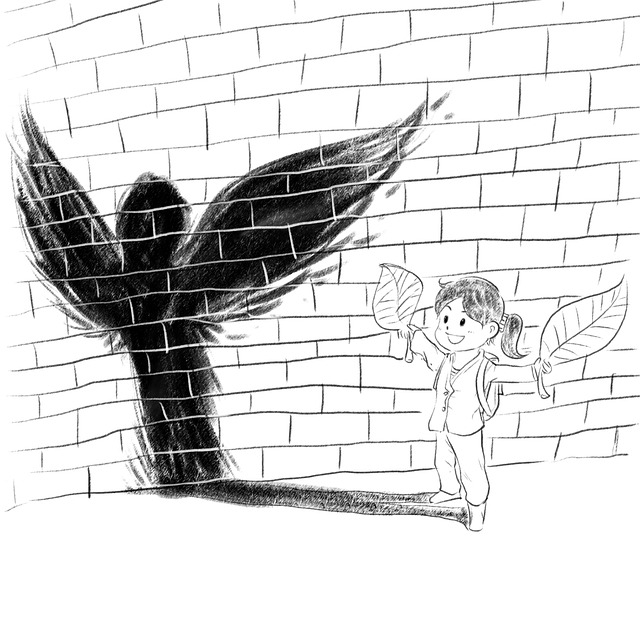
Speed
Move chairs out of the way so students can move easily to the board. Put a card with the word “A” a card with the word “AN” and a card with the word “THE” on the front board. Divide students into 2 teams (more if you have a larger class). Call out a sentence with a missing article and the first person on each team must run to touch the card that has the correct article (similar to flyswatter relay without the flyswatters).
From More Grammar Games by Mario Rinvolucri and Paul Davis
22 Grammar and Spelling Activities

Word Cards
Select sentences – e.g. sentences from the text or dialogues you are studying, idioms or proverbs, or sentences that you create to practice a particular verb tense or to utilize new vocabulary, etc. Break each sentence down and write each word on a separate index card. There are many ways to play this game: 1. Each student is given a card. The student whose word begins with a capital letter comes to the front of the class, students come forward as their words fit into the sentence, until 1 complete sentence has been made; or 2) Students are divided into teams. Each team has the same words to make the same sentences. The teacher gives an instruction, e.g. “show me a proverb about chickens” – all of the students in the teams rush to sort their words into the appropriate proverb and the first team to arrange its members to read “Don’t count your chickens before they’re hatched” gets a point for their team. For beginning players, variation 1 is best, but for intermediate and advanced players variation 2 is a lot of fun and is an excellent way to introduce new idioms/proverbs as well as reviewing known material. It is very effective for introducing or reviewing dialogues and vocabulary.
From Five Minute Activities by Penny Ur and Andrew Wright
Variation: Marching Sentences – Write the words for sentences on individual cards and put them in an envelope – write the number of words on the outside of the envelope. Call enough students up to the front of the class to each take one card from the envelope. Have the rest of the class help each student to find the right place in the sentence. You can have separate cards for punctuation as well, or you can include punctuation on the word cards.
From Games for All Reasons by Matthew Schultz and Alan Fisher

Alphabet Race
This is played just like word cards, only the objective is for one team to spell the word given by the teacher before the other team. This is a very exciting game and an excellent review of vocabulary words and a super opportunity to correct frequent spelling errors.
From 101 Word Games by George P. McCallum

Passive or Active?
This is another variation on Word Cards and Alphabet Race, using the game frame to reinforce knowledge of passive and active sentence forms. Each team receives enough word cards in an envelope to form two sentences – one active, one passive. The teacher calls out “passive” and they must line up, as in alphabet race, in the correct order to show how to make the sentence passive. The first team to do so correctly receives a point. Each team has another chance to earn a point by then responding to the teacher’s request to form an active sentence with the words. e.g. The words in the envelope might be: designed, engineers, are buildings by design – Active: Engineers design buildings; Passive: Buildings are designed by Engineers.
From 101 Communicative Games for the English Classroom by Cyndi Turtledove
22 Grammar and Spelling Activities

Spelling Bee
The old fashioned spelling bee is a tried and true way to reinforce vocabulary and help students with difficult spelling problems. The class is divided into teams and the teacher addresses the first person on the first team and gives that person a word to spell, e.g. Wednesday. The student then repeats the word, spells it and repeats it again. You can expand on this by giving extra points if the team is able to effectively use the word in a sentence. You can set rules that allow for team members to help.
Variation: Spelling by Turns – The team spells each word that is given by the teacher, but they spell it one letter at a time, e.g. the teacher says, “spell rock” – the 1st student on Team A says “r”, 2nd student “o”, 3rd “c”, 4th “k” – the final student also says the word again – “rock.” This is one way of keeping everyone active without having to wait until they move up to the front of the line – once again you can decide whether to allow team support or not.
From 101 Word Games by George P. McCallum

Preposition Hide and Seek
Best for young students. They form a circle standing with their hands behind their back, palms up and open to receive things. Students close their eyes and the teacher moves around the circle, pretending to put something in each student’s hand. The teacher only puts something in 3 or 4 of the students’ hands (depending on the size of the class). Students are told to open their eyes and “hide” their objects. They all move around the room, pretending to hide them (or in the case of those who have the objects, actually hiding them). Student then take turns asking each other “where did you hide the (pennies, candy, pencil, etc.)”, e.g. Student A asks student B and student B says “under the book on the teacher’s desk”. Student A goes to look and If the object is there, that student gets a point. Then the next student in class asks another student and so on until all 3 or 4 objects have been found.
From 101 Communicative Games for the English Classroom by Cyndi Turtledove

Follow the Leader Continuously
The class is standing in a large circle, or standing up at their desks (depending on limitations of class size and ability to move furniture). To reinforce the concept of the “present continuous tense” the teacher begins by explaining that he/she will start and action and say a phrase at the same time, everyone must follow the action and phrase. I am brushing my hair, eating an apple, painting a wall, writing a letter, changing a tire, etc. Each student must then change the action and everyone else will follow, until the next person starts an action and so on.
Variation – Divide the class in half. Team A asks B “what are you doing” and B responds by saying what they are doing without showing the action and team A must then mime that action, and so on back and forth down the line. This can also be done in pairs sitting at desks in pairs, with student A initiating an action and student B asking “what are you doing?” student A answers “I’m brushing my teeth” while at the same time miming the action and student B “mirrors” the action of student A and also says “I’m brushing my teeth”, students go back and forth imitating each other’s actions as if they were looking into a mirror.
From 101 Communicative Games for the English Classroom by Cyndi Turtledove

Auction
Present the rules of an auction and key vocabulary (bid, auctioneer, what am I bid?, going, going, gone!) Tell students you are going to auction off correct sentences. Each pair of students is given a handout with a series of sentences – some correct, some incorrect. They must work together to decide which sentences are correct. Each pair is told that they have $5,000.00 to spend on correct sentences and that the minimum bid for each sentence is $200.00. Before the bidding begins, each pair should decide on their budget for each sentence. Then begin the auction by reading the sentences (in random order) and taking bids. When a sentence has been sold, make a note of the buyer and amount next to the sentence on your sheet. After each sale tell the group if the sentence is correct or not and give the correct version if it is incorrect. (Don’t give lengthy explanations of grammar at this point, as that will slow-up the auction, this is something you can make a note of and come back to later). The winning pair is the one with the most sentences and the most money at the end of the game.
From Grammar Games by Mario Rinvolucri
22 Grammar and Spelling Activities

Field Goal
This is a game that works very well with class sizes of 16 or less. Students are put into teams of 4. One student in each team roles a die. If the student rolls a 6 the teacher then reads a sentence aloud (or shows it on an overhead, writes it on the board), eliminating the last 6 words in the sentence, e.g. I’m going _____ _____ ______ _____ _____ ______. If the student rolls a 5 – In the morning when he was hungry, he _____ _____ _____ ______ ______. The team earns points corresponding to the number of words the student contributes to each sentence. This is a fun game which can be very stimulating – in small groups. A class larger than 16 takes too long to reach each student and students quickly become bored.
From Games for All Reasons by Matthew Schultz and Alan Fisher
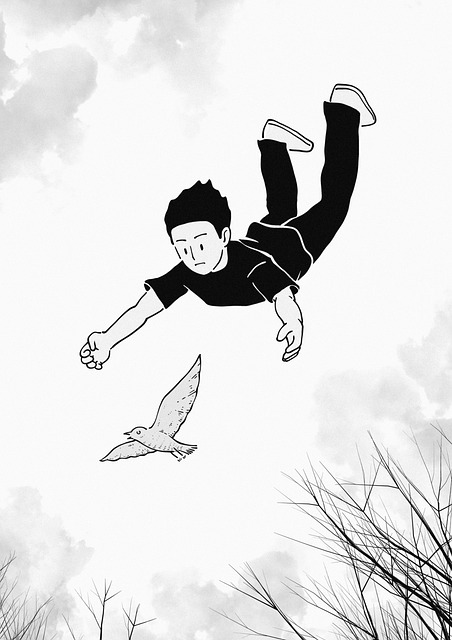
Fortune Teller
This is a super activity to reinforce using the future tense and to practice reported speech. Everyone writes down 3 questions they want to ask a fortune teller. Next, the students are put into pairs. Student A takes the hand of student B, palm up and responds to student A’s questions about his/her future. (e.g. “Will I be rich?” “Yes, I see a picture of you as an old man surrounded by piles of money” or “Will I pass the English exam?” “You will pass the English exam after studying 10 hours, etc.) The teacher asks students to report on what the fortune teller said. Reported speech can also be practiced by putting two pairs of students into a small group, if there is not enough time to report to the whole class.
From 101 Communicative Games for the English Classroom by Cyndi Turtledove

Lifeboat
This is a clever presentation of a tried and true activity to help students to practice reducing sentences and to see how the deletion of each word affects the meaning of the sentence. Write a fairly long and complicated (depending on student abilities) sentence on the board. Tell the students that they are in a lifeboat in the ocean and that there’s a hole in the boat. To stay alive, they’re going to have to throw words “overboard.” Otherwise the boat will sink. Have the students delete as many words as possible as long as a grammatical sentence remains. If the class deletes an undeletable word by mistake, declare that the boat has sunk and begin a new round. This can be played with the whole class or with teams. e.g. I’m going to the store tomorrow to buy some white paper for my father and mother’s fiftieth wedding anniversary. The tall, well-dressed man with the purple coat is talking excitedly to the red-haired, young lady in the old green car. Underlined words are those that can be deleted – The man is talking. An effective follow-up activity can be to build up the sentences that have been reduced – encourage the students to create a totally new sentence from the remaining core. This is a super activity that works especially well with low intermediate – advanced learners.
From Games for All Reasons by Matthew Schultz and Alan Fisher

Double or Nothing
This game can be used to review a variety of grammar concepts and can be used to assess student needs. The students are divided into groups of 4 (or pairs if there are fewer than 14 students) Explain that they are going to compete in an oral grammar quiz (you can also play this as a reading game by giving the students a list of the sentences to look at as you read them) – the objective for each team is to get the most beans (each team has an empty paper cup in front of them to hold the beans, the teacher has a bag filled with dried beans. Read a sentence from your quiz sheet and ask if it is correct or incorrect (it is best to go in order team by team). If the sentence is correct and they identify it as such, give them 2 beans. If the sentence is incorrect and they identify it accordingly, have them correct the sentence, if they do this successfully they are then given 3 beans. Now offer them the chance of double or nothing on another sentence. Do not offer double or nothing after a team has answered a second question – move on to the next team. Work through the sentences quickly, allowing about 20 seconds for consultation among team members. The team with most beans wins.

The Shout in the Circle
Form the class into a standing circle and ask one student to stand in the middle. (It’s a good idea for the teacher to begin this exercise as the one in the middle). Ask the student to describe his/her daily routine (I get up at 7:00, etc.) Every time the student uses a verb the whole group must shout out the verb, e.g. GETS. If the teller says the verb incorrectly, the circle must try to chorus the right form. At the conclusion of the presentation of the daily routine, the teller then selects another student to come to the center of the circle. Another option is for the student in the center to describe a room in his/her house and the circle then shouts out the prepositions (my chair is next to the window) NEXT TO. An excellent activity for beginning to low intermediate level students, however it can be somewhat stressful for the student in the center the first few times it is played. Alleviate the stress by preparing a text that the student reads – this takes the pressure off of the student for having to create sentences on the spot and develops reading and pronunciation skills. This can be a lot of fun and very NOISY (everyone enjoys the shouting aspect!), it is best used with a group of 15 or fewer students, somewhere where you are unlikely to bother other classes with the shouting.
From Grammar Games by Mario Rinvolucri
22 Grammar and Spelling Activities

Snap!
Put students into groups of 3-5. Give each group a packet of cards that have been made to reinforce a particular grammar concept. For example, to reinforce knowledge of simple tenses, select known verbs and write the present, past, progressive and future tenses of each of those verbs on index cards: e.g. run, ran, running, will run. Students deal out the cards to everyone in the group (some students may have more cards than others, it doesn’t matter). All cards must remain face-down on the table in front of each of the students. Student A turns over the one card “ran” and places it in the middle of the table – face-up. Students must turn the cards over quickly, without looking. Student B then turns over “walking”, places it on top of the card that says “ran”, Student C then turns over a card that says “laughing”, and Student B (seeing that it is a match of the tense of the card that came before) quickly slaps the cards in the middle of the table and shouts “SNAP!” Student B then has a chance to take all of the cards in the middle of the pile if he can make a sentence using the last card showing face-up “laughing”. If the sentence is correct, he gets all of the cards, if not, the student to his left can make a sentence and, if correct, he would get the cards. The object of the game is to have the most cards at the end of the game. Once cards have been played, they can’t be played again until a new game begins. Can be used to reinforce innumerable grammar principles, pronunciation, opposites, vocabulary review, etc.
From Pronunciation Games by Mark Hancock
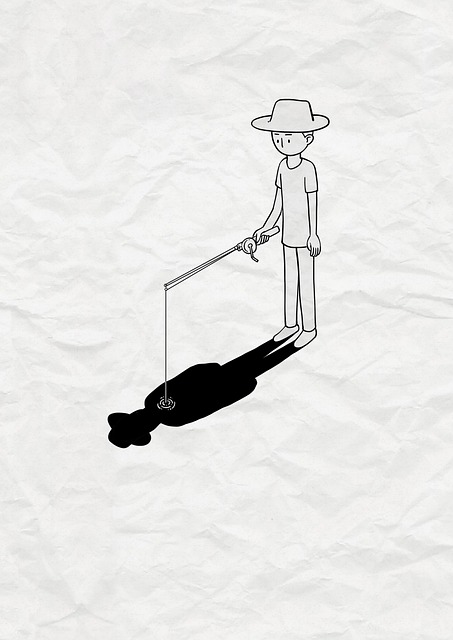
Baseball
This can be used as a game frame to reinforce a variety of skills and
knowledge. Divide the class into two teams. This can be played simply or a bit more elaborately by actually marking spaces on the floor for 1st base, 2nd, 3rd, and Home plate. Have two baseball diamonds on the floor (if you have chosen to mark it accordingly). Tell the first student from each team as he/she comes up to bat, do you want to hit a single, a double, a triple or a homerun? Have a variety of questions, each with increasing difficulty. So if a student says they want to hit a single and you are reinforcing knowledge of idioms you would say “finish this idiom ‘It costs an arm…” (the student then says “and a leg”) and makes it to first base. Then it is the other team’s turn “at bat” and you ask the same question. If the team member says he/she wants to hit a double, you might ask him/her to give you a definition for an idiom “I’m all thumbs” if the student answers (it means I’m clumsy) he/she gets to advance to second base. Your triple question might be to ask the student to us an idiom in a sentence “use ‘show up’ in a sentence” (I’m glad that you finally showed up, I thought we’d miss the movie); for a homerun you might require that the student complete an idiom, give a definition and use it in a sentence. As students stand on the bases that they have achieved the next person coming up to bat realizes how many runs he/she must get to bring people home.

Perfect Criminals
Using an interesting assortment of pictures of people. A great resource for pictures is National Geographic magazine. Give each pair or group of 3 students a picture of a person or a group of people. Tell the students that they are working for the FBI and that they must prepare an FBI “profile” fact sheet about the person(s) in the picture they are looking at. They will be sending out an FBI “all points bulletin” searching for the criminal(s). They will use the perfect tense to explain what the criminals are accused of, e.g. “He has robbed 3 banks”, “They have kidnapped their boss,” “She has used a gun to threaten people”, “He has been seen writing graffiti on several buildings,” etc.
From Fun with Grammar by Suzanne Woodward

22 Grammar and Spelling Activities. Also check out these English grammar activities












